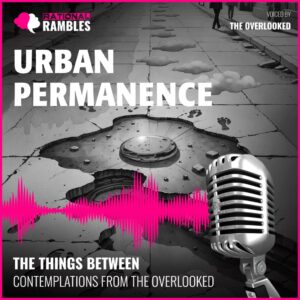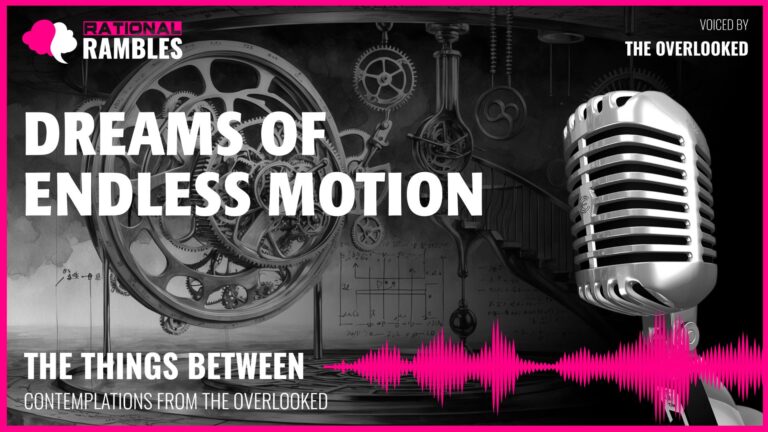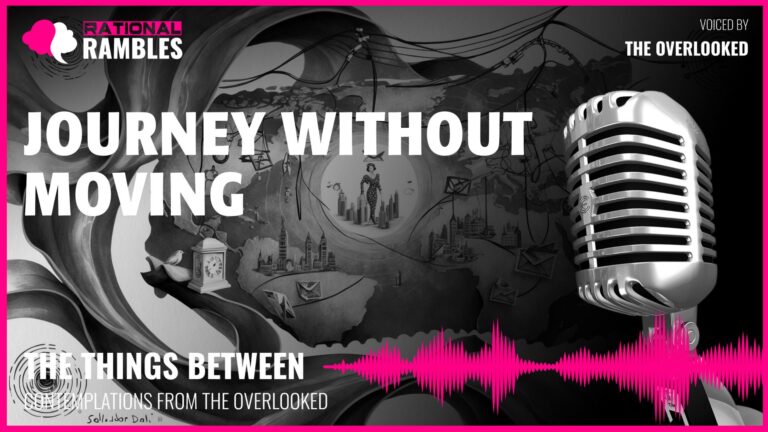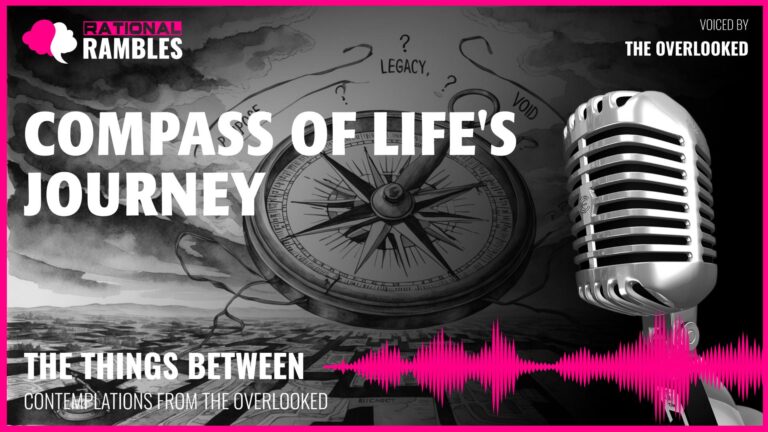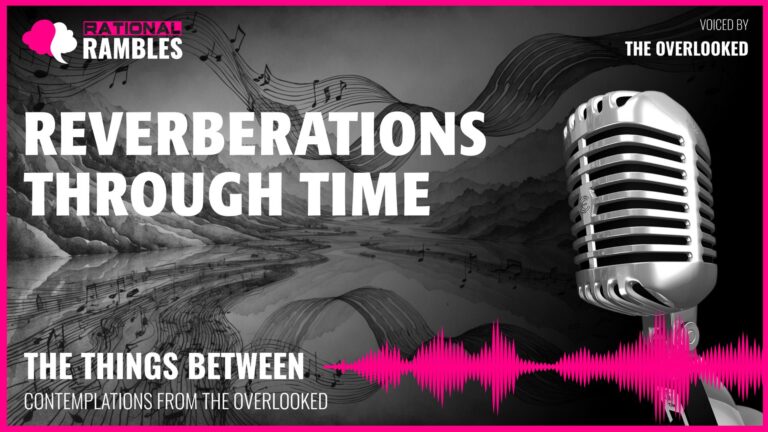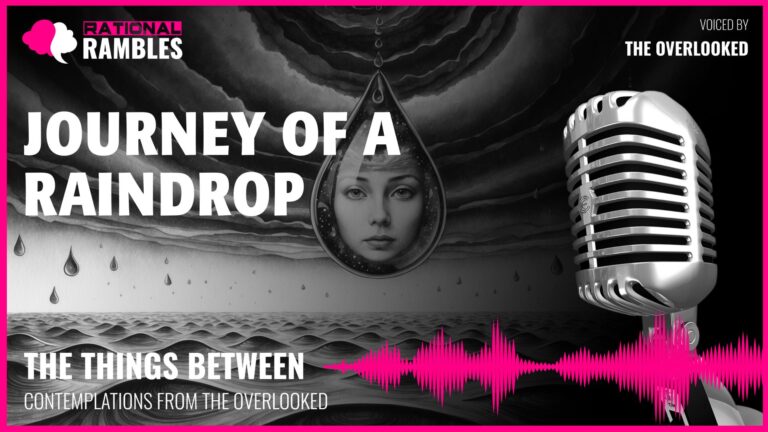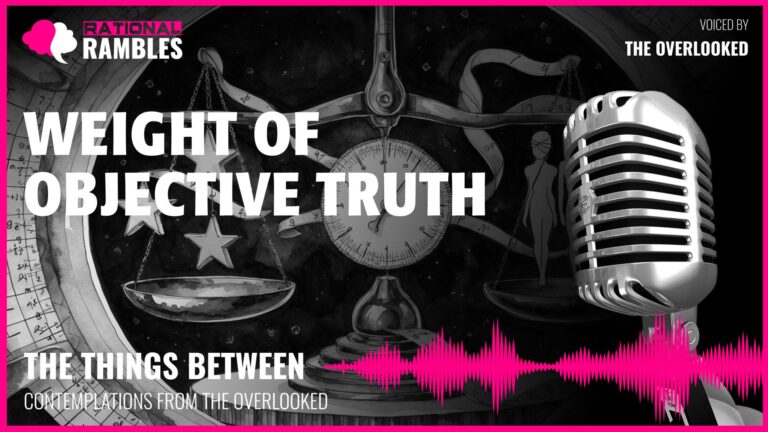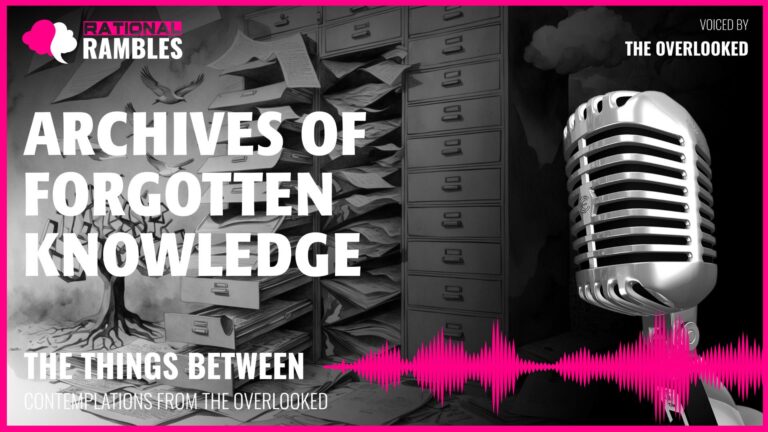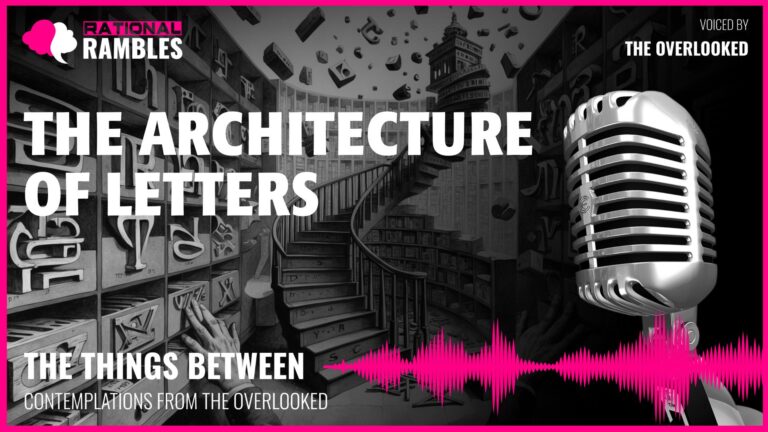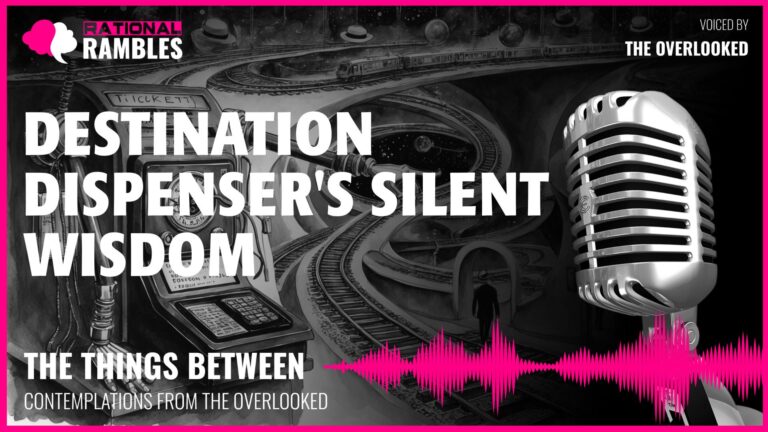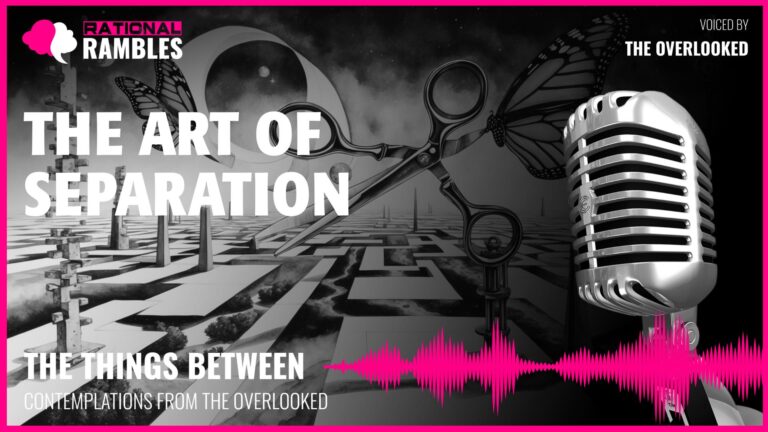The Archaeology of Permanence: Accidental Immortality in Urban Spaces
Introduction
In the vast tapestry of human existence, we often contemplate permanence through grand monuments, enduring literature, or revolutionary ideas that reshape civilization. Yet the most profound insights about durability and persistence sometimes emerge from examining the overlooked, the accidental, the unintentionally permanent. Urban spaces are filled with unplanned artifacts that outlast their intended lifespans, raising profound questions about permanence, intention, and the nature of existence itself.
This philosophical exploration delves into what might be called “accidental immortality”—the curious phenomenon whereby ephemeral objects or traces transform into enduring features of our landscape. These unintentional landmarks challenge our understanding of permanence, raising questions about the relationship between purpose and persistence, between human intention and material reality. Through examining this paradox, we may gain insight into our own complex relationship with time, meaning, and the physical world we both create and inhabit.
What does it mean for something intended to be temporary to become nearly permanent? How do overlooked elements of urban spaces contribute to our collective experience and memory? And what might these unexpected instances of durability reveal about the nature of existence itself? These questions guide our inquiry into the philosophical dimensions of permanence in the spaces we inhabit daily but perhaps seldom truly see.
The Paradox of Unintended Permanence
There exists a profound irony in the way certain objects achieve a form of immortality precisely by failing their intended purpose. Consider the mundane items designed for momentary use—disposable packaging, construction barriers, or even the residue of consumable goods. These objects, created explicitly for ephemerality, occasionally transcend their designated lifespans through accident or oversight, becoming fixtures in our environment that endure for years or even decades.
Temporal Inversion and Ontological Status
This inversion of temporal expectation—where the momentary becomes monumental—creates a fascinating ontological paradox. Objects designed with planned obsolescence that nonetheless persist force us to reconsider fundamental questions about the nature of things. Their continued existence represents a form of rebellion against intended purpose, challenging the very categories we use to classify the objects in our world.
When something refuses its designated fate of disposal or decay, it enters an unusual existential territory. It exists in a liminal state—neither functioning as originally intended nor completely transformed into something else. These persistent objects become accidental monuments, testifying to the gap between human intention and material reality. They embody what philosopher Jane Bennett might call “thing-power”—the capacity of inanimate objects to “act as quasi agents or forces with trajectories, propensities, or tendencies of their own.”
Comparative Examples of Unintended Permanence
This phenomenon appears across various contexts. Consider ancient graffiti preserved on the walls of Pompeii—casual inscriptions never meant for posterity that now provide invaluable insights into daily Roman life. Or the accidental preservation of footprints in once-wet cement that become permanent records of momentary presence. Even digital errors—glitches in video games or corrupted image files—can achieve a kind of permanence when they’re documented, shared, and incorporated into cultural memory.
In each case, something intended to be transient becomes fixed in time, transforming from ephemera to artifact through no deliberate preservation effort. This accidental archiving raises profound questions about the relationship between intention, temporality, and the material persistence of things in the world.
Urban Archaeology and the Anthropocene Record
Our cities are constantly writing their own histories in layers—both intentionally through monuments and archives, and unintentionally through the accumulated residue of daily life. This unplanned record constitutes what might be called an “archaeology of the ordinary,” providing future investigators with traces of how we actually lived, rather than merely how we wished to be remembered.
The Unintentional Time Capsule
Urban spaces function as unintentional time capsules, preserving traces of human activity across eras. Unlike curated museum collections or deliberate monuments, these accidental preservations offer unfiltered glimpses into everyday existence. They capture not what a society deemed important enough to memorialize, but what proved too persistent to eradicate—the stubborn remnants that refused disposal or decay.
Archaeologists increasingly recognize the value of these mundane artifacts. A cigarette butt embedded in asphalt, a bottle cap pressed into soil, or residual adhesive from a long-removed advertisement—each preserves information about consumption patterns, material technologies, and everyday practices. As archaeologist William Rathje demonstrated through his “Garbage Project,” examining what societies discard often reveals more about actual behavior than what they deliberately preserve.
Fossils of the Anthropocene
These persistent urban traces can be understood as “fossils” of the Anthropocene—physical evidence of human activity that will outlast the individuals and perhaps even the societies that created them. Future researchers might study these marks as diligently as contemporary paleontologists examine ancient imprints in stone.
The philosophical implications are profound. Our brief actions create traces that may outlive us by centuries, transforming momentary choices into semi-permanent features of the world. The discarded gum that becomes a sidewalk fixture, the initials carved into wet concrete, the lost keys that become embedded in asphalt—each represents a moment of human activity frozen in time, an unintentional contribution to the fossil record of our civilization.
This perspective invites reflection on the temporal scales of human existence. While individual lives span decades, our material impacts may persist for millennia. Plastic fragments, radioactive isotopes, and altered geological formations will likely outlast not only their creators but potentially human civilization itself. We are, in effect, communicating with the distant future through these unintentional artifacts, though the message we’re sending was never consciously composed.
The Phenomenology of the Overlooked
Our daily urban experiences are shaped not only by the architect’s vision or the city planner’s blueprint but also by countless overlooked elements—the accidental landmarks that populate our common spaces. These persistent features exist at the periphery of consciousness, rarely commanding direct attention yet subtly influencing how we perceive and navigate our environment.
Visible Invisibility
Many persistent urban traces exist in a state of “visible invisibility”—physically present yet rarely noticed. This perceptual paradox reveals something fundamental about human consciousness and attention. Our cognitive systems are optimized to filter sensory information, foregrounding what seems immediately relevant while relegating the rest to background awareness.
Phenomenologist Maurice Merleau-Ponty described perception as an active, embodied process through which we engage with the world rather than passively receive sensory data. Through this lens, the overlooked elements of urban space exist in a perceptual middle ground—registered by our senses but rarely elevated to conscious awareness unless something draws our attention to them specifically.
This selective attention creates an interesting philosophical condition where objects can be simultaneously present and absent in our experience—physically there but perceptually filtered out. The stain on the sidewalk, the faded paint on a bench, the cracked tile in a subway station—each exists in this liminal perceptual space, influencing our experience without becoming the focus of it.
Differential Perception and Situated Knowledge
Who notices these overlooked elements varies significantly based on perspective, need, and circumstance. A child mapping hopscotch possibilities, a wheelchair user navigating textural changes, a maintenance worker assessing necessary repairs—each perceives the same environment differently, noticing what others might miss.
This differential perception aligns with feminist philosopher Donna Haraway’s concept of “situated knowledge”—the understanding that all perception and knowledge are partial and positioned, influenced by the specific circumstances and embodiment of the perceiver. The crack in the sidewalk that means nothing to one pedestrian might be a significant navigational challenge to another, a geological curiosity to a third, and a maintenance priority to a fourth.
These variations in perception highlight how urban spaces are not neutral backgrounds but complex fields of interaction differently experienced based on one’s physical abilities, social position, professional training, and individual history. The persistent marks in these spaces—whether deliberate or accidental—contribute to these varied experiences in ways that often go unacknowledged in formal discussions of urban design and public space.
Temporality Beyond Human Scales
The persistent traces in urban environments invite us to consider temporality beyond the familiar human scales of minutes, hours, and years. These enduring marks exist in a different temporal framework—one that challenges our understanding of permanence and transience, forcing us to confront timescales that dwarf individual human experience.
Material Temporalities
Different materials experience and express time in fundamentally different ways. Concrete cracks and heaves with freeze-thaw cycles, metal oxidizes at varying rates depending on environmental conditions, and synthetic polymers deteriorate through complex interactions with ultraviolet light and microbial activity. Each material has its own “temporal signature”—a characteristic way of existing through and responding to time.
Philosopher Gilles Deleuze distinguished between “chronos” (measurable, sequential time) and “aion” (the non-chronological time of events). Urban artifacts exist in both temporal modes—they can be dated chronologically while also participating in the more fluid temporality of ongoing transformation and interaction. They record both the moment of their creation and the accumulated effects of their continued existence.
This material temporality operates largely independently of human perception. While we might perceive a mark on the sidewalk as unchanging, at the molecular level it undergoes constant transformation—accumulating particulate matter, experiencing microscopic erosion, and gradually altering its chemical composition through environmental exposure. What appears fixed to human perception is actually in continuous flux when viewed at different temporal and physical scales.
Geological Consciousness
These considerations invite what might be called a “geological consciousness”—an awareness of time that extends beyond human lifespans to encompass the slower rhythms of material persistence and planetary change. This perspective reveals the ultimately temporary nature of even our most “permanent” creations.
From a geological perspective, the distinction between ephemeral and permanent begins to blur. The plastic fragment that persists for 500 years and the stone monument that stands for 5,000 are both momentary from the perspective of deep time. Both will eventually succumb to the processes of material transformation that govern all physical existence. The difference is merely one of rate rather than kind.
This geological consciousness has ethical implications as well. Recognizing that our actions create traces that will outlast us by centuries or millennia invites reflection on responsibility to future generations. The accidental landmarks we create today—from microplastics in waterways to atmospheric carbon—will form part of the world inherited by countless future beings. Our momentary conveniences thus become their permanent conditions, an asymmetrical relationship that raises profound questions about intergenerational justice.
The Democracy of Unplanned Persistence
Unlike curated monuments or commissioned public art, accidental urban landmarks emerge through unregulated processes—creating a kind of “unplanned democracy” in public space. These persistent marks represent a form of participation in shaping the urban environment that operates outside official channels, raising important questions about ownership, agency, and the politics of public space.
Unauthorized Contributions to Public Space
Official urban elements—from buildings to benches, sculptures to signage—typically undergo extensive approval processes involving permits, committees, and compliance with regulations. By contrast, the permanent marks left through accident or informal action bypass these gatekeeping mechanisms entirely. They represent unauthorized but nonetheless real contributions to the shared environment.
This creates an interesting tension between formal and informal processes of place-making. While city authorities may view these unauthorized marks as defacement requiring removal, they constitute an alternative form of public participation—one that emerges through direct action rather than through representation or permission. French philosopher Henri Lefebvre articulated this as the difference between “representations of space” (the conceived, planned city) and “representational space” (the lived, experienced city) with the latter always exceeding and escaping the former.
From political graffiti to lovers’ initials carved in wet cement to the residue of public gatherings, these persistent traces create what cultural geographer Tim Cresswell calls “landscapes of resistance”—physical manifestations of the ongoing negotiation between official visions of public space and the actual practices of those who inhabit it.
Inclusive Urban Archives
The unplanned persistence of various urban marks creates an archive more inclusive than official records or monuments. While formal commemorations typically privilege the powerful, famous, or wealthy, the accidental record includes traces from people of all social positions—creating what might be called a more democratic archive of urban life.
Consider the social inclusivity of these persistent marks: the handprints of children pressed into wet cement, the etchings of unknown individuals, the stains from everyday activities of ordinary people. Unlike official monuments that selectively memorialize certain individuals or events, these traces capture a broader cross-section of those who used the space.
This accidental archive preserves what official history often overlooks—the presence and activities of marginalized groups, everyday practices, and ordinary lives. It constitutes what archaeologist Michael Shanks calls “the archaeology of us”—a record not of exceptional events but of the quotidian reality that constituted most of human experience.
This democratization of persistence raises profound questions about whose marks on the world we value and preserve. It challenges hierarchies of importance and offers alternative ways of understanding significance beyond the exceptional or the officially sanctioned.
Identity and Continuity Through Change
The paradoxical persistence of objects intended to be temporary raises fundamental questions about identity and continuity—philosophical issues that have occupied thinkers from Heraclitus to Derek Parfit. How do entities maintain identity through transformation? When does something become something else? These theoretical questions find concrete expression in the persistent traces of urban environments.
The Ship of Theseus in Urban Context
The ancient philosophical puzzle known as the Ship of Theseus asks whether a ship that has had all its components gradually replaced remains the same ship. This question about identity through material change finds fascinating application in persistent urban artifacts. The sidewalk stain that gradually incorporates environmental elements, the carved initials that weather and erode, the abandoned structure slowly reclaimed by vegetation—each undergoes continuous transformation while maintaining recognizable identity.
These objects raise intriguing questions about what constitutes their essential nature. Is it their material composition, which changes over time as environmental factors alter their chemical structure? Is it their form or appearance, which gradually transforms through weathering and accumulation? Is it their function or relationship to the surrounding environment, which may shift as the context changes around them?
Philosopher John Locke proposed that personal identity consists in psychological continuity—the chain of memories and experiences connecting one’s past and present selves. By analogy, perhaps the identity of persistent urban traces lies in their continuous history—the unbroken chain of causation connecting their original creation to their current state, despite material changes along the way.
Becoming Through Persistence
There exists a paradoxical relationship between change and identity for these persistent traces. Rather than undermining their identity, the very processes of weathering, accumulation, and environmental interaction often strengthen their distinctive character over time. The longer they persist, the more they accumulate unique histories that differentiate them from similar objects.
Consider how a mark in concrete develops distinctive characteristics through years of exposure—collecting specific patterns of dirt, developing particular cracks, accumulating unique layers of material. Over time, what might have been one of many similar marks becomes increasingly individuated through its particular history of persistence.
This suggests an interesting inversion: while these objects were often mass-produced or created through common processes (identical pieces of gum, similar graffiti techniques, standard construction materials), their extended existence in specific locations transforms them into unique entities. Their identity emerges not despite but because of their temporal persistence.
This process mirrors philosopher Gilbert Simondon’s concept of “individuation”—the ongoing process through which entities develop their distinctive identity not as a fixed property but as a continuous becoming. For Simondon, being is not static but a dynamic process of differentiation. The persistent urban trace exemplifies this understanding, achieving its most distinctive identity precisely through its continued exposure to transformative forces.
The Ethics of Removal and Preservation
The persistent traces in urban environments inevitably raise practical questions about removal versus preservation. These questions extend beyond mere aesthetics or maintenance concerns into deeper ethical territory—forcing us to confront fundamental issues about value, history, and the tensions between different conceptions of public good.
Competing Value Systems
Decisions about removing or preserving persistent urban traces involve navigating competing value systems. From a purely utilitarian maintenance perspective, many such traces represent disorder requiring correction. From a historical or cultural perspective, however, these same elements might constitute valuable documentation of urban life worthy of preservation.
Environmental concerns add another dimension. The persistent synthetic material embedded in public space might be viewed as pollution demanding remediation. Yet the energy and resources required for removal efforts—along with the chemicals often used in cleaning processes—create their own environmental impacts. This creates ethical dilemmas where different environmental values (reducing pollution versus conserving resources) come into tension.
Aesthetic judgments further complicate these decisions. While conventional standards might classify many persistent traces as unsightly, alternative aesthetic frameworks—such as wabi-sabi’s appreciation of imperfection and aging, or artistic movements celebrating the found and accidental—might find value in these same elements. The question becomes not merely whether something is “beautiful” but whose conception of beauty should prevail in shared spaces.
The Right to Remain
These considerations lead to a provocative question: Do certain persistent traces develop something akin to a “right to remain” based on their longevity? Does the sidewalk marking that has endured for decades acquire a form of tenure through its persistence, becoming part of the authentic character of a place?
This question connects to broader debates about urban preservation and gentrification. Historic preservation frameworks typically focus on protecting intentionally created structures deemed architecturally or historically significant. But what about the unplanned elements that contribute to a neighborhood’s distinctive character—the accumulated marks, adaptations, and alterations that developed organically over time?
Urban theorist Jane Jacobs famously advocated for preserving the organic complexity of urban neighborhoods against modernist impulses toward clean-slate redevelopment. Her perspective suggests value in the accumulated layers of urban life—including the unplanned persistent elements that contribute to a location’s unique identity or “sense of place.”
Decisions about removal versus preservation ultimately reflect deeper value judgments about orderliness versus authenticity, sanctioned versus unsanctioned contributions to public space, and curated versus emergent urban environments. The ethical frameworks we apply to these questions reveal fundamental assumptions about who public space truly belongs to and who has legitimate authority to shape it.
Consciousness, Awareness, and Object-Oriented Ontology
The persistent presence of seemingly ordinary objects in urban environments invites us to consider more radical philosophical perspectives on the nature of objects themselves. Contemporary philosophical movements like Object-Oriented Ontology (OOO) and speculative realism challenge anthropocentric worldviews by suggesting that objects possess forms of existence independent of human perception or utility.
Beyond Human-Centered Perspectives
Traditional philosophy has often treated objects as either mere resources for human use or as constructions of human cognition. Object-Oriented Ontology, associated with philosophers like Graham Harman and Timothy Morton, rejects this approach, arguing instead for what they call “flat ontology”—a philosophical stance that refuses to privilege human existence over other entities.
Applied to persistent urban traces, this perspective invites us to consider their existence beyond their relationship to human intention or perception. The sidewalk stain experiences temperature fluctuations, interacts with rainwater, incorporates airborne particles, and participates in complex chemical processes—regardless of whether humans observe or think about it. It has what philosopher Ian Bogost might call its own “alien phenomenology”—a way of being in and experiencing the world that is fundamentally different from human experience.
This approach asks us to consider what philosopher Thomas Nagel famously framed as the question: “What is it like to be a bat?” We might similarly ask: What is it like to be an enduring mark on urban infrastructure? While we cannot directly access such experience, acknowledging the possibility of object-centered existence challenges our assumptions about what constitutes significant being in the world.
Relationality and Networks of Existence
Beyond considering objects in isolation, contemporary philosophy increasingly emphasizes the relational networks in which all entities exist. Actor-Network Theory, associated with Bruno Latour, treats both human and non-human entities as actants in complex networks of relationship and influence.
The persistent urban trace participates in multiple such networks. It forms relationships with weather systems, microorganisms, maintenance schedules, pedestrian routes, and urban wildlife. It influences human behavior (people might step around or over certain marks), becomes incorporated into children’s games, serves as a meeting point, or functions as a timestamp for those familiar with an area.
These relationships are not merely passive but constitute active participation in the ongoing production of urban space. The persistent trace is not simply acted upon but acts—affecting drainage patterns, providing habitat for microorganisms, influencing pedestrian movement, and contributing to the sensory experience of place.
This relational perspective challenges simplistic distinctions between subject and object, active and passive. The persistent urban trace is neither merely a passive recipient of environmental forces nor a fully autonomous agent, but rather a participant in complex webs of mutual influence and transformation that include both human and non-human elements.
The Poetics of Unintended Durability
Beyond philosophical analysis, the persistent traces in urban environments inspire aesthetic and poetic responses. Their accidental permanence resonates with artistic sensibilities focused on found objects, chance operations, and the beauty of the overlooked—creating rich territory for creative engagement and meaning-making.
Wabi-Sabi and the Aesthetics of Impermanence
The Japanese aesthetic tradition of wabi-sabi finds beauty in imperfection, impermanence, and incompleteness. It values the weathered, the worn, and the marks left by time—precisely the qualities embodied by many persistent urban traces. This aesthetic framework offers an alternative to Western preferences for the pristine, the new, and the unblemished.
Through a wabi-sabi lens, the cracked sidewalk, the faded advertisement, or the weathered bench reveal beauty exactly because they bear witness to the passage of time. Their imperfections tell stories, create texture, and manifest the natural processes of aging and transformation that connect human creations to broader natural cycles.
This aesthetic appreciation is not merely sentimental but reflects deeper philosophical insights about the transience of all things. As the 14th-century Buddhist text Tsurezuregusa states: “To know the world is to know the sadness of things.” The persistent urban trace—simultaneously durable yet gradually changing—embodies this bittersweet understanding of existence as both persistent and ultimately impermanent.
Artistic Responses and Creative Engagements
Artists have long found inspiration in the accidental, the overlooked, and the unintentionally durable elements of urban environments. From the Surrealists’ celebration of found objects to contemporary urban photography’s focus on decay and persistence, these elements offer rich material for creative exploration.
Photographer Camilo José Vergara’s decades-long documentation of specific urban locations captures the gradual transformation of buildings and infrastructure—including the persistent marks that endure through cycles of neglect, renewal, and change. His work reveals how these seemingly minor elements contribute to the visual signature and historical continuity of place.
Installation artists like El Anatsui create works that deliberately mimic the processes of accumulation, weathering, and transformation that characterize persistent urban traces. His sculptural pieces incorporate discarded materials that take on new significance through artistic recontextualization—much as the persistent urban trace gains meaning through its unexpected durability.
These artistic engagements remind us that meaning is not inherent in objects but emerges through interpretation and context. The same mark that might be dismissed as pollution or defacement in one framework becomes a poignant testament to human presence or an aesthetic object in another. This multiplicity of potential meanings reflects the philosophical concept of polysemy—the capacity of physical signs to bear multiple, sometimes contradictory, interpretations simultaneously.
Conclusion: Lessons from the Overlooked
Our exploration of persistence in urban spaces—from sidewalk stains to embedded artifacts—reveals profound insights about existence, temporality, and the relationship between intention and outcome. These overlooked elements of our shared environment offer a unique philosophical vantage point from which to reconsider fundamental questions about permanence, meaning, and our place in the material world.
The Wisdom of Unintentional Monuments
The accidental landmarks that populate our urban environments teach us several important philosophical lessons. First, they demonstrate the gap between human intention and material reality—how our plans and purposes often yield unexpected results that persist beyond their intended lifespans. This humbling insight challenges notions of human mastery and control, revealing how even our most casual actions may leave enduring marks on the world.
Second, these persistent traces illuminate the multi-temporal nature of existence—how different timescales operate simultaneously in the same physical space. While humans move through cities at the pace of minutes and hours, the built environment changes over decades, and materials transform across centuries. These overlapping temporalities remind us that our moment-to-moment experience represents just one layer in a much deeper temporal reality.
Third, the democratic nature of these persistent marks challenges hierarchies of significance and value. When the casual discard becomes as durable as the planned monument, we must reconsider what constitutes meaningful impact on the world. These overlooked elements testify to the significance of ordinary lives and everyday actions—not just exceptional achievements or authorized contributions.
Embracing Complexity and Contradiction
The persistent urban trace exists in the realm of paradox—simultaneously pollution and artifact, eyesore and historical record, accident and monument. This inherent contradictory nature resists simple categorization, forcing us to embrace complexity in our understanding of the material world.
Perhaps the greatest philosophical value of these overlooked elements lies precisely in this resistance to simplification. They remind us that reality exceeds our conceptual categories—that the world is ultimately richer, stranger, and more complex than our frameworks for understanding it. The sidewalk stain that is simultaneously waste product and historical document, urban blemish and microscopic ecosystem, challenges us to hold multiple truths simultaneously.
In a cultural moment often characterized by polarization and categorical thinking, these complex objects offer a model for nuanced perception—for seeing beyond binary oppositions to appreciate the multidimensional nature of reality. They invite us to develop what philosopher F. Scott Fitzgerald called “the ability to hold two opposed ideas in the mind at the same time, and still retain the ability to function.”
A Different Kind of Permanence
As we conclude our exploration, we return to the fundamental question of permanence. What constitutes true durability in a world of constant change? The persistent urban trace suggests an answer quite different from traditional monuments or intentional preservation efforts.
True permanence may not lie in resistance to change but rather in participation in ongoing processes of transformation. The sidewalk marking persists not by remaining exactly the same but by becoming integrated into the continuing life of its environment—incorporating new elements, developing relationships with surrounding systems, and becoming ever more deeply embedded in its context.
This offers a model of permanence not as static preservation but as dynamic integration—a form of lasting significance achieved through relationship rather than isolation. Perhaps this represents a more realistic and ultimately more meaningful understanding of how anything endures in our world of flux and change.
As we move through urban spaces, these philosophical insights invite us to look differently at the overlooked—to find meaning in the mundane, significance in the seemingly insignificant, and a deeper understanding of existence in the most ordinary features of our shared environment. The persistent urban trace, in its humble way, may have as much to teach us about the nature of being and time as any grand philosophical treatise or monument to human achievement.


